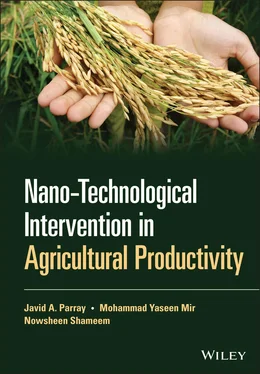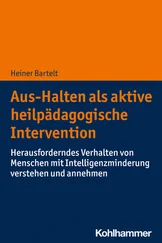TiO 2and ZnO‐NPs have modified the bacteria structure substantially, with a distinct environmental effect. For example, the falling taxa are closely related to the process of N 2fixation, while growing taxa are likely to affect organic and biopolymer decomposition processes. Furthermore, Shahrokh et al. [62] have found that the dose‐dependent effects of AgNPs on Rhizobium and Azotobacter nitrate reductase activities were facilitated by the low doses of AgNPs in Azotobacter (0.2 ppm).
Depending on these experiments' outcomes, the denitrifying bacterial population has been predicted to be highly sensitive to toxicity to nanoparticles [63]. Despite the well‐known effect of nanoparticles on soils' microbial community, there is a lack of literature that links soil element explicitly to toxic comportment of nanoparticles to the biota of soil [54]. Frenk et al. [64] also showed the effects on soil bacteria of two different types of soil of copper oxide (CuO) and magnetite (Fe 3O 4) nanoparticles.
It is important to note that there were more adverse effects from both nanoparticles in sandy loam soil, with CuO having a relatively strong impact on the composition and bacteria of the culture. CuO, affected more precisely, is the most focused taxa in the sandy loam soil of Rhizobial and Sphingobacteriaceae. Based on this observation, the incidence of a clay segment in the soil has decreased the nanoparticle toxicity. The ecotoxicology of ZnO‐NPs on soil microbes was illustrated [65] based on parameters such as ammonification, breathing, dehydrogenase, and fluorescent diacetate hydrolase activity. In acidic and neutral soils, the adverse effects of ZnO‐NPs on microcosmic soil microbes have been found to have a more significant impact.
Alkaline soil, on the other hand, was very damaging. The toxicity of TiO 2NPs was also determined mainly to be influenced by soil and organic matter pH [66]. This substantially reduced carbon in high pH and organic soils. These findings show that nanoparticles show acute toxicity to soil microbial substances in the soil environment to define important soil parameters such as form, organic soil matter, and soil humidity. Significantly, intimate description of the possible effect of different soil properties on the toxicity of the nanomaterials helps to reduce the fuel toxicity of nanoparticles produced throughout the soil environment.
Nanoparticles' plant phytotoxicity is yet another concern because of the leaves, and root system plants' complete surface area has enough opportunity to interact with nanoparticles. Moreover, because their minuscule size can translocate effectively inside the host plant, the risk of nanoparticles becoming toxic is higher in plants. Nanoparticles in the plant body are assumed to enter by surface adsorption or pass through small plant openings [67, 68]. NPs depend on their size and concentration primarily on plant toxicity. Furthermore, thanks to plants' easy absorption and their subsequent translocation within the system, small nanoparticles can cause phytotoxic toxicity at even lower levels [56]. Most commonly used metal nanoparticles, i.e. AgNPs, are thought to play a crucial role in their phytotoxic behaviour, the scale of nanoparticles [69].
Asli and Neumann [70] also noted TiO 2NPs' mechanical treatment concentration mode for hydraulic leakage and Z transpiratory rate. The hydroponic solution is cultivated in mays. In contrast, Yang et al. [71] noticed the stimulating impact of TiO 2‐NPs (2.5 g/l) application on fresh and dry weight of Spinacia oleracea and also elevated response was seen in case of chlorophyll, protein and total nitrogen content in leaves. Also in cultivations of cultivated media with a low concentration of 0.5 g/l supplements of TiO 2‐NPs, Song et al. [72] have documented a positive effect on duckweed ( Lemna minor ); the also increased a concentration caused significant crop harm.
Table 2.1 Nanomaterials and their impacts on plants and soil microbiota.
| Soil characteristics |
Nanoparticles |
Impacts |
References |
| Soil type |
| Silt and clay soil |
Titanium oxide |
Substantially limited mineralization of carbon |
[66] |
| Loam sandy |
Titanium oxide |
Affects soil microbiota |
[66] |
| Zinc oxide |
No Cucumis sativus toxicity with soil pH 5.5 at a concentration of 2000 mg/kg |
[57] |
| Cupric oxide, zinc oxide |
The toxic effect on Triticum aestivum |
[82] |
| Silver |
Reduced microbial biomass |
[83] |
| Silver |
Significantly lower soil enzymatic activities and respiration caused by the substrate |
[84] |
| Cerium oxide, tin oxide, zinc oxide |
Microbial biomass C and N no effect |
[85] |
| Titanium oxide |
Reduced bacterial diversity |
[86] |
| Titanium oxide |
Reduced bacterial taxa |
[61] |
| Amine‐modified polystyrene nanospheres and TiO 2nanoparticles |
Decreases in rhizosphere bacterial counts and plant root and stem growth |
[87] |
| Sulfate‐modified polystyrene nanospheres |
Increased rhizosphere bacterial counts |
[87] |
| Clay and loamy |
Zinc oxide |
Toxic impact on Triticum aestivum |
[58] |
| pH |
| Acidic |
Silver, zinc oxide |
Increased toxicity to Eisenia fetida |
[65] |
| Alkaline |
Titanium oxide |
The decrease in the microbial population in soil |
[66] |
| Silver |
Declined toxicity |
[88] |
| Organic part |
| High |
Silver |
Toxicity reduction for biofilm‐forming populations |
[89] |
| Titanium oxide |
Effect on C mineralization |
[66] |
| Zinc oxide |
Significant effect of adding alginate at a concentration of 400–800 mg/kg/kg on Zea mays |
[59] |
| Low |
Cupric oxide, zinc oxide |
Improved toxicity to microbes |
[64] |
| Cation exchange capacity |
| High |
Silver |
Decreased toxic impact on Pseudomonas chlororaphis |
[90] |
| Zinc oxide |
No effect on Lepidium sativum |
[81] |
| Low |
Silver |
Improved toxicity to soil microbes |
[90] |
ZnO‐NPs are by far the most widely used material oxide nitrogen NPs, and elevated Vigna radiata and Cicer arietinum have been documented to increase growth, comparatively, in the vegetal agar media [73]. The similar dose‐based effect responses had been observed for Cu‐NPs, where wheat ( Triticum aestivum ) and mung bean ( Phaseolus radiatus ) have significantly inhibited growth [74–78]. The critical route that plants are predominantly exposed to the released nanoparticles is the soil. It should be noted that many investigators have also begun to take this approach into account by avoiding the hydroponic system, which offers more appropriate toxicity data and straightforward understanding. Zhu et al. [79] also interpreted the soil system's nanofilling potential by preventing Cucurbita maximum uptake of Fe 3O 4‐NPs. Fe 3O 4‐NPs (20 nm) were traced into the leaves simultaneously when the plants were grown in a hydroponic growth process. Similarly, when subjected to soil irrigation, nanoparticles of CeO 2had a neutral effect on maize plants [79].
On the other hand, the toxicity of AgNPs in P. radiatus and Sorghum bicolor cultivated in the soil system was lacking compared to agar [80]. Most notably, soil parameters are primarily used to regulate plant reactions to soil‐released nanoparticles [81]; for instance, they have demonstrated the non‐toxic effect of ZnONPs in the cultivation of Lepidium sativum with a higher cation exchange level. Also, CuO and ZnO nanoparticles were more toxic for T. aestivum [82]. Such results indicate which soil parameters can attenuate nanoparticles' likely phytotoxicity. The analysis of key risk assessment factors in the tripartite interaction of nanoparticles with microbial communities of plants, soils, and soils would understand the environmental effects of nanoparticles released into the agroecosystem ( Table 2.1). Indeed, essential soil factors are mainly controlled by soil type, pH, organic matter, soil moisture, behaviour, and toxicity of nanoparticles manufactured for plants and microbes.
Читать дальше











![Chade-Meng Tan - Search Inside Yourself - Increase Productivity, Creativity and Happiness [ePub edition]](/books/703803/chade-thumb.webp)
